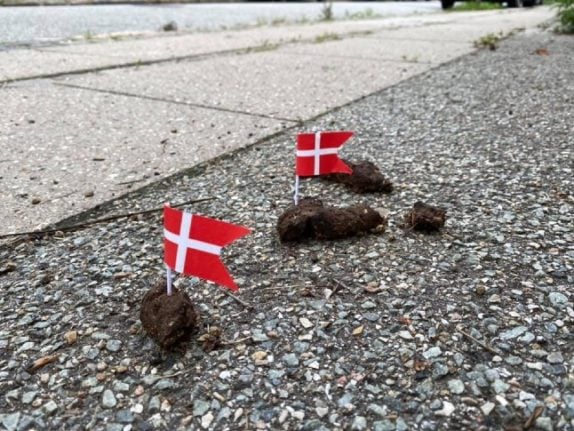Foreigners often marvel at the willingness of Danes to bring out their beloved Dannebrog flag for decorations, but sticking it in dog poo seemed somehow disrespectful.
“I started to laugh because it was such a massive ‘what the fuck?’ moment,” Helesfai told The Local. “Like how could there be something more Danish than that?”
READ ALSO: Why do Danes love the Danish flag so much?
It was only when he went on the Expats in Copenhagen Facebook page to ask for an explanation, that helpful Danish members informed him that the practice had been going on for some time.
“It has existed for many years, and yes, you’re correct that people do it to protest, or let’s just say to piss off other people,” one wrote. “Actually a municipality once encouraged the people to put flags in dog poop to remind the dog owners to remove it.”
Another traced the practice back to a single protest that caught on.
“It started a few years ago with a little old lady who got mightily upset about all the dog mess when she was going to the shops and she started sticking these flags in it,” he claimed.
“Some other people got mightily upset that she was doing that, so lots of other people started doing it just to upset the people that get upset about it.
“Now lots of people do it, many to protest the dog mess, many to protest the protesters who protest about sticking the Danish flag in protest at dog mess.”
Whatever the truth, a quick Google shows that the tradition has been going on for close to a decade, and possibly much longer.
At first, Helesfai thought the gesture might have a slight nationalist slant.
“I thought maybe they were indicating, like “come on people, that’s not Danish standards”, he said. “But knowing how much Danish people use their flags for almost everything, I highly doubt there is any sort of discrimination in it.”
“As a matter of fact, I found it very creative to send a constructive message like this.”



 Please whitelist us to continue reading.
Please whitelist us to continue reading.
I can’t be sure of the reasoning of the woman who supposedly was the first, but I can certainly imagine the following as a motivation:
If it upsets someone to see the Danish flag in dog feces, they should realize that it can be prevented by eliminating the feces themselves. And eliminating (pardon the pun) the feces is the real goal of those inserting the flags. If you have a dog, don’t leave its feces in public. If you don’t have a dog, you can still accost those who ARE leaving their dogs’ feces, to get them to stop doing so.